Showing Spotlights 209 - 216 of 624 in category All (newest first):
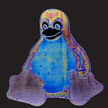 By replacing dye inks with optical nanostructures, researchers have demonstrated the use of inkjet technology to create colored interference layers with high accuracy without the need for high-temperature fixing. The key to this technology is the ability to control the inkjet printing process to form nanostructures with high accuracy. Whereas conventional inkjet printing occurs in the microrange, this new work demonstrates that optical structures can be printed with much greater accuracy, which in particular opens the prospects in developing controlled interference printing of interference color images.
By replacing dye inks with optical nanostructures, researchers have demonstrated the use of inkjet technology to create colored interference layers with high accuracy without the need for high-temperature fixing. The key to this technology is the ability to control the inkjet printing process to form nanostructures with high accuracy. Whereas conventional inkjet printing occurs in the microrange, this new work demonstrates that optical structures can be printed with much greater accuracy, which in particular opens the prospects in developing controlled interference printing of interference color images.
Feb 11th, 2016
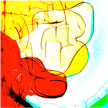 Hierarchical porous carbon/graphene (HPC/HPG) materials have been intensively investigated over the past decades. These materials are demonstrated as promising electrode materials for various systems, such as lithium-ion batteries, lithium-sulfur batteries, supercapacitors, and fuel cells, with a remarkable capacity, high efficiency, long stability, and excellent rate capability. Researchers have now proposed the employment of hierarchical porous calcium oxide (CaO) particles as effective catalytic template for the facile CVD growth of graphene.
Hierarchical porous carbon/graphene (HPC/HPG) materials have been intensively investigated over the past decades. These materials are demonstrated as promising electrode materials for various systems, such as lithium-ion batteries, lithium-sulfur batteries, supercapacitors, and fuel cells, with a remarkable capacity, high efficiency, long stability, and excellent rate capability. Researchers have now proposed the employment of hierarchical porous calcium oxide (CaO) particles as effective catalytic template for the facile CVD growth of graphene.
Jan 26th, 2016
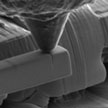 In the past couple of decades, nickel-tungsten (Ni-W) amorphous and nanocrystalline materials have been drawing more and more research interest due to the superior mechanical properties such as high hardness, good mechanical performance, and excellent corrosion resistance. Striving to enhance the mechanical performance of Ni-W thin film alloys, researchers report how the annealing temperature will influence the microstructure evolution and the fracture properties of Ni-W alloys.
In the past couple of decades, nickel-tungsten (Ni-W) amorphous and nanocrystalline materials have been drawing more and more research interest due to the superior mechanical properties such as high hardness, good mechanical performance, and excellent corrosion resistance. Striving to enhance the mechanical performance of Ni-W thin film alloys, researchers report how the annealing temperature will influence the microstructure evolution and the fracture properties of Ni-W alloys.
Jan 8th, 2016
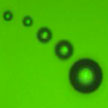 Bubble-pen lithography (BPL) is a novel optically controlled nanofabrication technique that can be widely applied to pattern colloidal and biological particles on substrates in order to build functional optic, electronic, and magnetic devices. In BPL, an optically controlled microbubble is generated to capture and immobilize colloidal particles on the plasmonic substrates. With this new lithographic technique, the researchers can generate bubbles down to 1 micron in diameter. The smaller bubbles provide an enhanced patterning resolution.
Bubble-pen lithography (BPL) is a novel optically controlled nanofabrication technique that can be widely applied to pattern colloidal and biological particles on substrates in order to build functional optic, electronic, and magnetic devices. In BPL, an optically controlled microbubble is generated to capture and immobilize colloidal particles on the plasmonic substrates. With this new lithographic technique, the researchers can generate bubbles down to 1 micron in diameter. The smaller bubbles provide an enhanced patterning resolution.
Dec 22nd, 2015
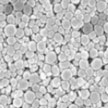 Researchers have approached the preparation of artificial analogs of nacre by using various methods and the resulting materials have captured some of the characteristics of the natural composite - but so far never have fully replicated it. Now, researchers have reported the first successful attempt to mimic the structure of nacre while maintaining the same characteristic geometry, aspect ratio and phase proportions. They used 10-20 nm thick layered double hydroxide (LDH) platelets with an aspect ratio similar to the aragonite platelets in nacre and 'glued' them together with a simple organic 'mortar' (PSS).
Researchers have approached the preparation of artificial analogs of nacre by using various methods and the resulting materials have captured some of the characteristics of the natural composite - but so far never have fully replicated it. Now, researchers have reported the first successful attempt to mimic the structure of nacre while maintaining the same characteristic geometry, aspect ratio and phase proportions. They used 10-20 nm thick layered double hydroxide (LDH) platelets with an aspect ratio similar to the aragonite platelets in nacre and 'glued' them together with a simple organic 'mortar' (PSS).
Dec 14th, 2015
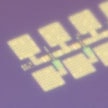 Rollable displays and other flexible, stretchable electronic systems are often enabled by the successful integration of nanostructured materials. Most commercially available flexible electronic circuits and devices are fabricated on flexible plastic substrates, such as polymeric amides, PEEK polymers, or transparent conductive polyester films. Although these substrates can be easily bent and rolled up, they cannot be used to fabricate rollable display-integrated gadgets that are fixed at a rigid perpendicular position on their own. To overcome this issue, researchers have now used a reversibly bistable material to demonstrate flexible electronics.
Rollable displays and other flexible, stretchable electronic systems are often enabled by the successful integration of nanostructured materials. Most commercially available flexible electronic circuits and devices are fabricated on flexible plastic substrates, such as polymeric amides, PEEK polymers, or transparent conductive polyester films. Although these substrates can be easily bent and rolled up, they cannot be used to fabricate rollable display-integrated gadgets that are fixed at a rigid perpendicular position on their own. To overcome this issue, researchers have now used a reversibly bistable material to demonstrate flexible electronics.
Oct 26th, 2015
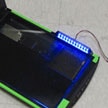 Setting up or upgrading a lab to conduct state-of-the-art DNA nanotechnology is not an inexpensive undertaking. The hardware alone can easily set you back several hundreds of thousands of dollars. Analogous to the open-source software approach, increasingly instruments and specialized equipment designs are also developed as part of a growing open source scientific hardware (OSSH) movement. Adding to the list, a recent article presents three examples of open source/DIY technology with significantly reduced costs relative to commercial equipment.
Setting up or upgrading a lab to conduct state-of-the-art DNA nanotechnology is not an inexpensive undertaking. The hardware alone can easily set you back several hundreds of thousands of dollars. Analogous to the open-source software approach, increasingly instruments and specialized equipment designs are also developed as part of a growing open source scientific hardware (OSSH) movement. Adding to the list, a recent article presents three examples of open source/DIY technology with significantly reduced costs relative to commercial equipment.
Oct 7th, 2015
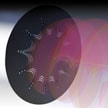 Researchers have demonstrated that perfect orbital angular momentum could be generated in optical nanostructures inspired by catenaries - the curve that a free-hanging chain assumes under its own weight. They used optical catenary-shaped structures to convert circularly polarized light to helically-phased beam carrying orbital angular momentum. Similar to the 'catenary of equal strength', the phase gradient of the optical catenary is equal everywhere, which is a direct result of its special geometric shape.
Researchers have demonstrated that perfect orbital angular momentum could be generated in optical nanostructures inspired by catenaries - the curve that a free-hanging chain assumes under its own weight. They used optical catenary-shaped structures to convert circularly polarized light to helically-phased beam carrying orbital angular momentum. Similar to the 'catenary of equal strength', the phase gradient of the optical catenary is equal everywhere, which is a direct result of its special geometric shape.
Oct 2nd, 2015
 By replacing dye inks with optical nanostructures, researchers have demonstrated the use of inkjet technology to create colored interference layers with high accuracy without the need for high-temperature fixing. The key to this technology is the ability to control the inkjet printing process to form nanostructures with high accuracy. Whereas conventional inkjet printing occurs in the microrange, this new work demonstrates that optical structures can be printed with much greater accuracy, which in particular opens the prospects in developing controlled interference printing of interference color images.
By replacing dye inks with optical nanostructures, researchers have demonstrated the use of inkjet technology to create colored interference layers with high accuracy without the need for high-temperature fixing. The key to this technology is the ability to control the inkjet printing process to form nanostructures with high accuracy. Whereas conventional inkjet printing occurs in the microrange, this new work demonstrates that optical structures can be printed with much greater accuracy, which in particular opens the prospects in developing controlled interference printing of interference color images.
 Subscribe to our Nanotechnology Spotlight feed
Subscribe to our Nanotechnology Spotlight feed





